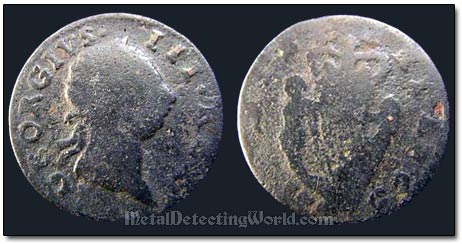Discovery of a Picnic Grove in Upstate New York, page 1
A Dream Metal Detecting Site Can Be Where You Less Expect It
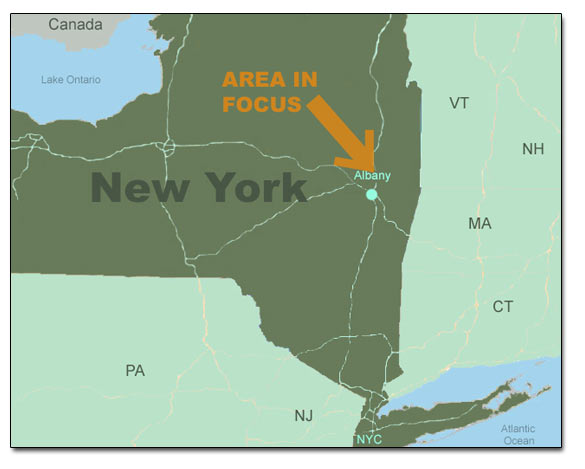
After I moved to Albany, the Capital of New York State, I called my treasure hunting buddy Peter, who is a Rev War buff, and asked him if he knew about any potential metal detecting sites in the Capital District area. Peter told me that one of the good spots for metal detecting would be where the Hudson River and Mohawk River merge together.
A lot of activity took place at that point during the French-Indian and Revolutionary Wars. I checked the local map and noticed that a village of Green Island was situated at that location. The northern tip of what used to be the Green Island interested me the most.
Then I found a 1854 map that showed the Saratoga Railroad (later called Delaware-Hudson) that used to run through the island. The map also showed a Ferry that ran across the Hudson River and connected the Green Island village to the city of Troy.
A Fragment of 1854 Beer's Map
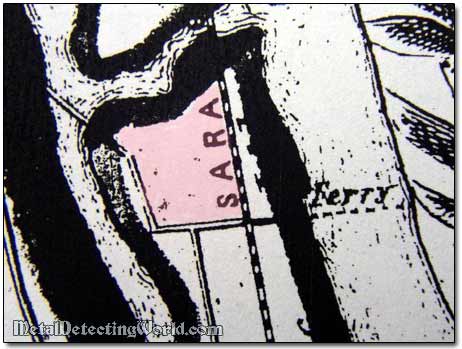
The northern tip of the Green Island was empty of houses on both a modern map and a map from 19th century. As I was wondering what was at that spot now, I put my Minelab Explorer XS into my truck and drove to the location which was only 10 minutes away from my house.
What I discovered was promising at a first glance: the entire area was taken by the forest through which a few ATV trails were blazed. The rusty railroad tracks were still visible along the road which ran to the abandoned railroad bridge over the Mohawk River.
I Found a Forested Area at the Location
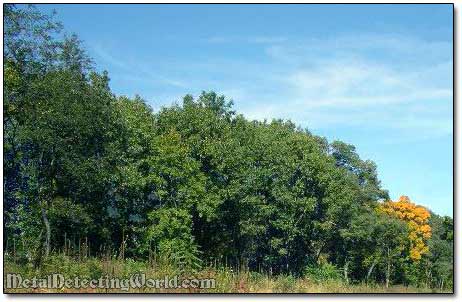
I parked my truck next to the bridge, took my detector out, and went through the hole in the wire fence to the woods on the right side of the road. Soon after I turned my machine on, I received a solid signal that indicated a target with conductivity of a Nickel.
I cut the plug out and, to my surprise, a 1935 Buffalo Nickel appeared in the hole. I rechecked the hole and received another solid signal. I began deepening the hole and suddenly noticed a whole bunch of Buffalo Nickels mixed with soil! Wow!
That was a fantastic start! Within next 30 minutes, I unearthed a dozen of Wheat Pennies, three Mercury Dimes and a rose gold signet ring.
Vintage Rose Gold Signet Ring
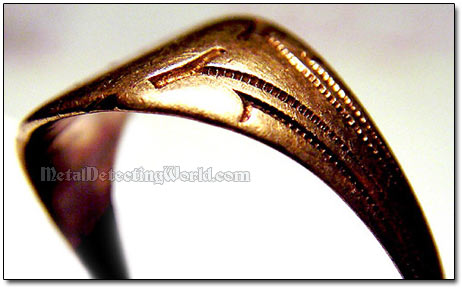
I could not believe it! But at that point, I had to go back home. I decided to come back here on next day.
When I got back home, I checked all the old maps of the area that I had acquired at the library. None of those maps showed anything on the spot. I decided to keep metal detecting there until I would not find any more coins. I even set aside my other metal detecting projects.
When I told my girlfriend Shelly about my discovery, she got very excited and enthusiastically expressed her desire to metal detect the site together. She even wanted to try my Minelab Explorer this time. Her favorite machine, White's Spectrum XLT, was ready, so we planned to search the site on the following day.
We arrived to the Green Island in the late afternoon. Shelly did not feel like crawling through the hole in the fence so we decided to metal detect in the woods on another side of the road.
Shelly and Sergei Before Exploring the Site
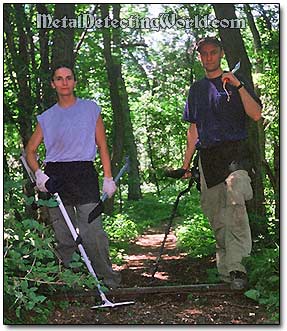
As soon as we began swinging the coils at the beginning of an ATV trail, Shelly gave me a shout and came over holding something in her closed fist: a big smile on her face. When she opened her fist, a 1898 Barber Dime reflected the sun rays into my face!
Now I knew that not only I had discovered a virgin site but also we could have lots of metal detecting fun. And we did! Soon after her first find, Shelly dug up a nice 1864 2 Cents coin in excellent condition.
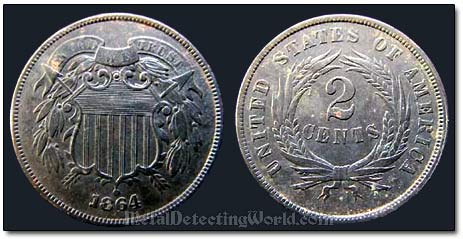
My next coin find surprised me by its age: it was 102 years older than Shelly's 2-cent piece! There were 173 years between the 1762 King George III Farthing, the oldest coin found so far, and the 1935 Buffalo nickel that I found on a previous day. I was wondering if the number - the difference between coin dates, would go higher.
1762 King George III Farthing
